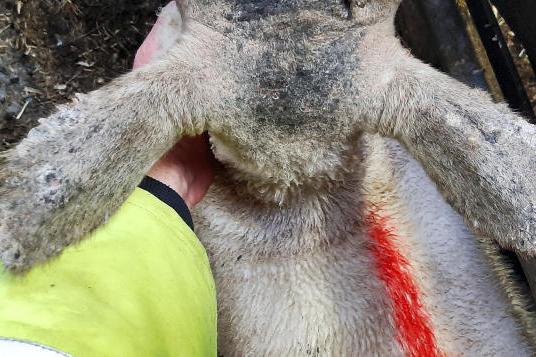Cobalt deficiency: Cobalt deficiency is one area where a high percentage of sheep farms face challenges. Issues typically start to emerge from July onwards but this can differ significantly depending on the mineral status on the farm.
Characteristic signs start with lambs performing below target and in some cases an early indicator is the skin on lamb’s ears becoming scaly or scabby, with skin flaking away. Lambs suffering from an acute deficiency can start to lose condition and start going dry in the wool despite being on a relatively good level of nutrition while tell-tale signs of more advanced problems are lambs starting to pine away.
Lambs typically require about 1mg cobalt per head per day and since they do not store cobalt, regular supplementation is warranted during high-risk periods. Where administering an oral drench, the advice is to administer every two or three weeks. Other options include administering boluses or feeding meal with an adequate mineral inclusion level. Adding cobalt to water may also be an option but this option is less reliable unless you are sure lambs will be consuming enough water.
If you are in doubt about problems on your farm, samples can be taken to identify if there are underlying issues while a simple way of exploring is to randomly split lambs in a batch, treat 50% and monitor subsequent performance.
Optimising tag retention: The manner in which sheep tags are applied can have a marked influence on tag retention rates and influence the risk of ear infections. It is particularly important to take care when applying tags to replacement ewe lambs to protect your investment and where selling to make lambs more attractive to potential customers.
Button tags should be applied midway in the height of the ear, taking care to avoid cartilage (which can be seen on the underside of the ear) and at a distance of about one-third of the way along the animal’s ear, measuring from the head out. This distance may need to be extended in breeds with thicker ears – there should be some room for the tag to rotate and for air to circulate.
For wraparound tags, manufacturers advise leaving 4mm to 5mm room between the edge of the ear and the tag for ear growth. This is to ensure tags do not become too tight as animals mature. The advice is to apply wraparound tags at the top of the ear and, similar to a button tag, about a third of the distance out from the head, taking care not to pierce cartilage. The male part which pierces the ear should be applied on the outer part, leaving less risk for tags to get caught. Tagging should be carried out where possible on a dry day with the animal securely restrained and always in hygienic conditions.
Dog care: It is important to remain on guard, with thefts of dogs continuing at a worrying rate. As such, microchipping of dogs has never been as important. It is also timely to consider worm control, with roundworms (prevalent in pups) and tapeworms (more common in older dogs) the main threat.
Veterinary advice recommends worming pups every two weeks until they are 12 weeks of age and then every month until they reach six months of age. The advice for adult dogs is worming every three months throughout adulthood.






 This is a subscriber-only article
This is a subscriber-only article









SHARING OPTIONS: